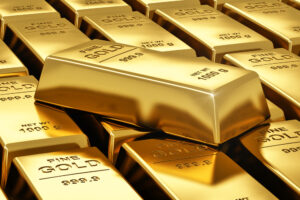
Agro Kar (Kropyvnytskyi) plans to start assembly-line production of tractors for agriculture in September this year in a new 2,000 sq m workshop currently under construction, said Dmytro Kysylevskyi, deputy chairman of the Verkhovna Rada Committee on Economic Development.
“The Made in Ukraine economic policy gives birth to new plants. Companies that previously only imported or repaired equipment are becoming manufacturers thanks to government programs,” he wrote on his Facebook page.
The total investment in the project is about UAH 100 million.
Kysylevsky said that Agro Kar has already invested UAH 30 million in launching tractor production – post production involves the production of each tractor at a separate site.
He noted that to implement the project of launching a new workshop, Agro Kar raised UAH 30 million under the 5-7-9% affordable loan program. Another UAH 8 million will be received as a state grant for the processing industry to purchase a laser machine.
“If the company reaches the required degree of localization, it will be able to join the program to compensate 25% of the cost of Ukrainian-made agricultural machinery,” Kysylevsky notes.
He specifies that domestic manufacturers of spare parts and components will be involved. In particular, Agro Kar purchases hydraulics and distributors for tractors from Hydrosila (Kropyvnytskyi), radiator blocks from Promtransenergo (Sumy), lubricants from JV Yukoil (Zaporizhzhia), control cables from Technoprivod (Rivne), high-pressure hoses – Motorimpeks (Kalush), batteries – Ista-Center (Dnipro), glass – Safe Glass Factory (Berdychiv), polymers and rubber seals, tanks – Poly Plast, wires and harnesses – Mac Farmer (both Kropyvnytskyi).
In addition, negotiations are underway to adapt the production of Rosava tires (Bila Tserkva) and Consima wheels (Dnipro) to the requirements of the company.
“Currently, the production volume is 12 tractors per month. After the launch of conveyor production, the company plans to increase production to 50 machines per month,” said Kysilevsky.
According to its website, Agro Kar has been operating since 2009. Currently, it repairs and modernizes agricultural machinery and supplies spare parts for agricultural machinery, including John Deere, Wil Rich, Case, DMI, Great Plains, Kinze, and Kraus.
“Agro Car also produces spare parts for agricultural machinery.
According to opendatabot, in 2024, the company doubled its net profit compared to 2023, to UAH 4.8 million, with revenue growing by 45% to UAH 74.4 million.
The company is owned by two local entrepreneurs, Andriy Teplyuk (60%) and Oleksandr Pustylnyk (40%).

In January-March 2025, imports of tin and tin products increased by 43.5% to $890 thousand ($277 thousand in March).
Exports decreased to $55 thousand (against $81 thousand a year earlier), of which $50 thousand in March.
In 2024, imports amounted to $3.19 million (+16.9%), exports – $389 thousand (+144%).
Tin is used mainly as a safe, non-toxic, corrosion-resistant coating in its pure form or in alloys with other metals. The main industrial applications of tin are in white tinplate (tinned iron) for food containers, in solders for electronics, in house pipelines, in bearing alloys, and in coatings made of tin and its alloys.
The most important tin alloy is bronze (with copper).

Imports of zinc and products in the first quarter of 2025 decreased by 17.8% to $9.75 million ($3.74 million in March).
Exports increased sixfold to $266 thousand ($89 thousand in March), while in 2024, the figure was $44 thousand for the same period.
At the end of 2024, imports amounted to $58.6 million (+27.5%), exports – $563 thousand (+4.3 times).
Pure zinc metal is used to restore precious metals, protect steel from corrosion and for other purposes.

Investment bank Goldman Sachs has raised its forecast for the gold price at the end of 2025 to $3,700 per ounce, up $400 from its previous estimate. The bank’s analysts expect that amid growing recessionary risks and stronger demand from central banks, the price of gold could range from $3,650 to $3,950 per ounce. In the event of negative scenarios, such as an economic downturn in the United States, the price could reach $4,500 per ounce.
Historical dynamics of gold prices over the past 10 years.
2015-2018: The gold price remained in the range of $1,100-$1,300 per ounce.
2019-2020: Growth to $1,500-$2,000 per ounce amid global economic uncertainties.
2021-2022: Stabilization in the range of $1,800-$1,900 per ounce.
2023-2024: Gradual increase to $2,400 per ounce.
2025: Reaching record levels exceeding $3,200 per ounce.
Gold prices traditionally rise during periods of geopolitical instability and economic crises, as investors view the metal as a safe haven asset.

In March 2025, China’s exports grew by 12.4% year-on-year, reaching $313.9 billion. This growth was significantly higher than the forecasted 4.4% and was the highest in the last five months. The main reason for this jump was the desire of Chinese manufacturers to speed up deliveries abroad before the new high US duties on Chinese goods come into effect.
On April 10, the administration of President Donald Trump increased tariffs on Chinese imports to 145%, citing trade imbalances and problems with fentanyl. In response, China imposed retaliatory duties of 125% on American goods and restricted exports of rare earth elements.
Experts warn that the March export growth is temporary. Exports are expected to decline in the coming months due to new tariffs and weakening global demand.
Analysts at Goldman Sachs and Citi have already lowered their forecasts for China’s GDP growth in 2025 to 4% and 4.2%, respectively. At the same time, China’s imports fell by 4.3% in March, indicating weak domestic demand. Purchases of soybeans fell particularly sharply – by 36.8%, which may be due to trade restrictions and delays in shipments from Brazil.
In response to the deterioration of trade relations with the United States, China is stepping up efforts to diversify its export destinations, increasing supplies to Southeast Asia, Africa, and India.
During his visit to Southeast Asia, President Xi Jinping emphasized the need to strengthen regional trade ties and counter unilateral protectionist measures.
Thus, despite the short-term growth in exports, the Chinese economy faces serious challenges amid the escalation of the trade war with the United States and weakening domestic demand.

The National Bank of Ukraine (NBU) increased sales of foreign currency on the interbank market last week by $144.27 million, or 36.8%, to $536.17 million, according to statistics on the regulator’s website.
According to the statistics, the National Bank bought only $0.06 million last week, compared to $6.63 million a week ago.
The data that the regulator managed to publish during this time shows that the negative balance between the volume of currency purchases by the population and the volume of its sales last week was volatile: from $16.6 million over the weekend and Monday, the amount increased to $22.1 million on Tuesday and $24.2 million on Wednesday, but on Thursday it fell to $17.2 million.
Along with the increase in interventions, the official hryvnia exchange rate against the dollar weakened by 19 kopecks to 41.3879 UAH/$1 last week.
On the cash market, the dollar also rose in price, but much less: from the level of 40.87-41.00, it reached a local peak of 41.16-41.30 UAH/$1 on April 10, but then the hryvnia strengthened to 40.95-41.10 UAH/$1.
As reported, Ukraine’s international reserves amounted to $42.4 billion as of April 1, 2025, up 5.6%, or $2.23 billion, from a month ago.